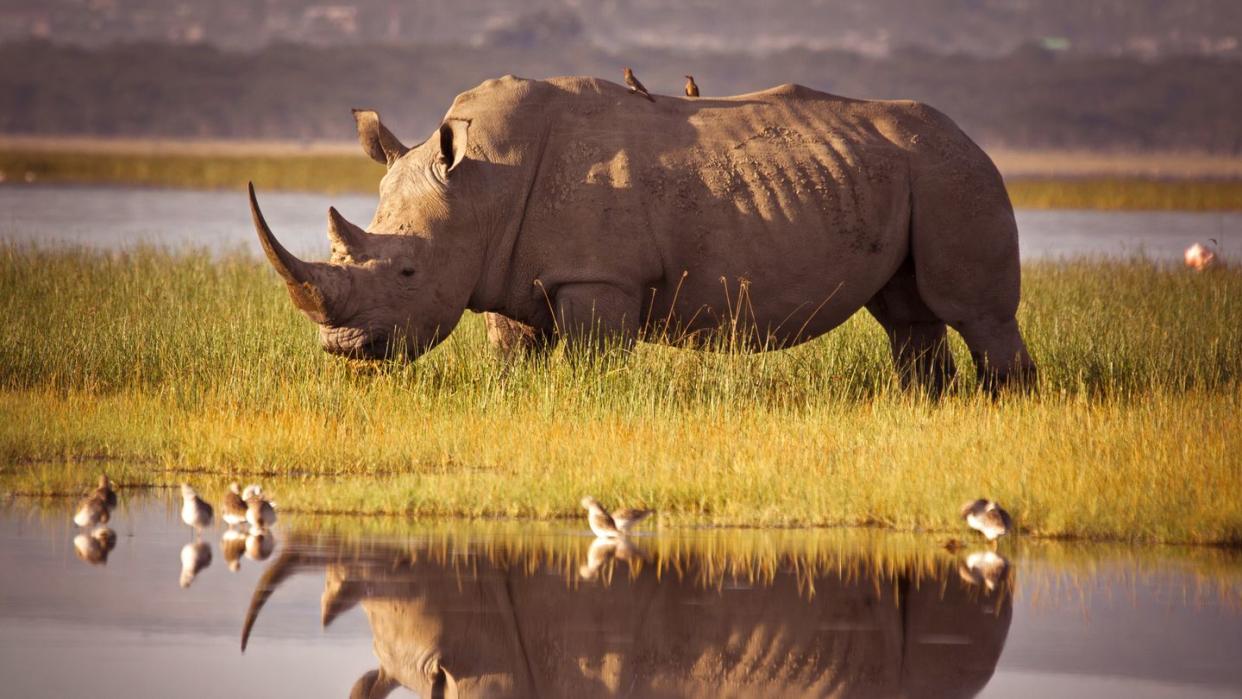Scientists Are Trying to Resurrect the Northern White Rhino With Just 12 Frozen Cells

In 2018, the last male northern white rhino died, leaving behind only two sterile females and seemingly spelling the end of the species.
A new study, which analyzed the living skin cells of 12 individual northern white rhinos, reports that a stable population could be grown from these cells using the southern white rhino as a surrogate.
While these cells could theoretically generate a genetically stable population in 10 generations, there are still many questions surrounding how to effectively create reproductive cells from the samples, as well as the efficacy of southern white rhino surrogacy.
For the past half-century, the story of the northern white rhino (Ceratotherium simum cottoni) has been a sad one. In the 1970s, some 700 of these rhinos roamed their native range in Central Africa. But civil wars, habitat degradation, and pervasive poaching dwindled their numbers to just 15 wild specimens a decade later, and by 2006, there were only four. In 2018, the last male northern white rhino (named Sudan) died, leaving behind only two females (Najin and Fatu) and rendering the entire subspecies effectively extinct.
However, some haven’t given up hope.
Scientists working in partnership with the San Diego Zoo Wildlife Alliance released a new study this week detailing the possibility of reviving the northern white rhino by generating embryos from 12 frozen skin cells. These cells are located in a facility called the “Frozen Zoo,” which contains over “10,000 living cell cultures, oocytes, sperm, and embryos” according to the San Diego Zoo.
Because Najin and Fatu are both infertile, the closely related southern white rhino (Ceratotherium simum simum) would be used as a surrogate to birth new members of the functionally extinct species. The new study uses a computer model to analyze how new northern white rhinos born from these cells would fare, and the results showed that a stable population could be grown over multiple generations. The results of the study were recently published in the journal Evolutionary Applications.
“As biodiversity loss outpaces recovery, conservationists are increasingly turning to novel tools for preventing extinction…however, restoration of populations can be hindered by low genetic diversity and deleterious genetic load,” the paper reads. “The persistence of the northern white rhino now depends on the cryopreserved cells of 12 individuals.”
Low genetic diversity spells doom for many species, as inbred animals are more subject to disease and genetic abnormalities. However, the study concluded that after 10 generations, this population of northern white rhino would be genetically diverse and healthy.
While this new research confirms that such a biological restoration is possible from a genetic perspective, a few challenges still persist. For one, these skin skin cells would need to be transformed into egg and sperm cells, which isn’t an easy process.
“Banked skin cells (fibroblast cell lines) can be reprogrammed into induced pluripotent stem cells (iPSCs), which have the ability to differentiate into any cell type,” co-author Aryn Wilder told IFLScience. “From there, the iPSCs can be directed to differentiate into primordial germ cells that give rise to sperm and eggs.”
Scientists also haven’t confirmed whether or not southern white rhinos will be successful surrogates for birthing this new lineage. But while their ability to bring back their norther cousins is still unknown, their own conservation story is one of the most successful in human history.
In the late 19th century, this rhino was also thought to be extinct. But 100 individuals were discovered in South Africa in 1895, and more than a century of conservation efforts has brought their numbers back up to around 18,000.
In other words, white rhinos know a thing or two about coming back from the brink.
You Might Also Like
